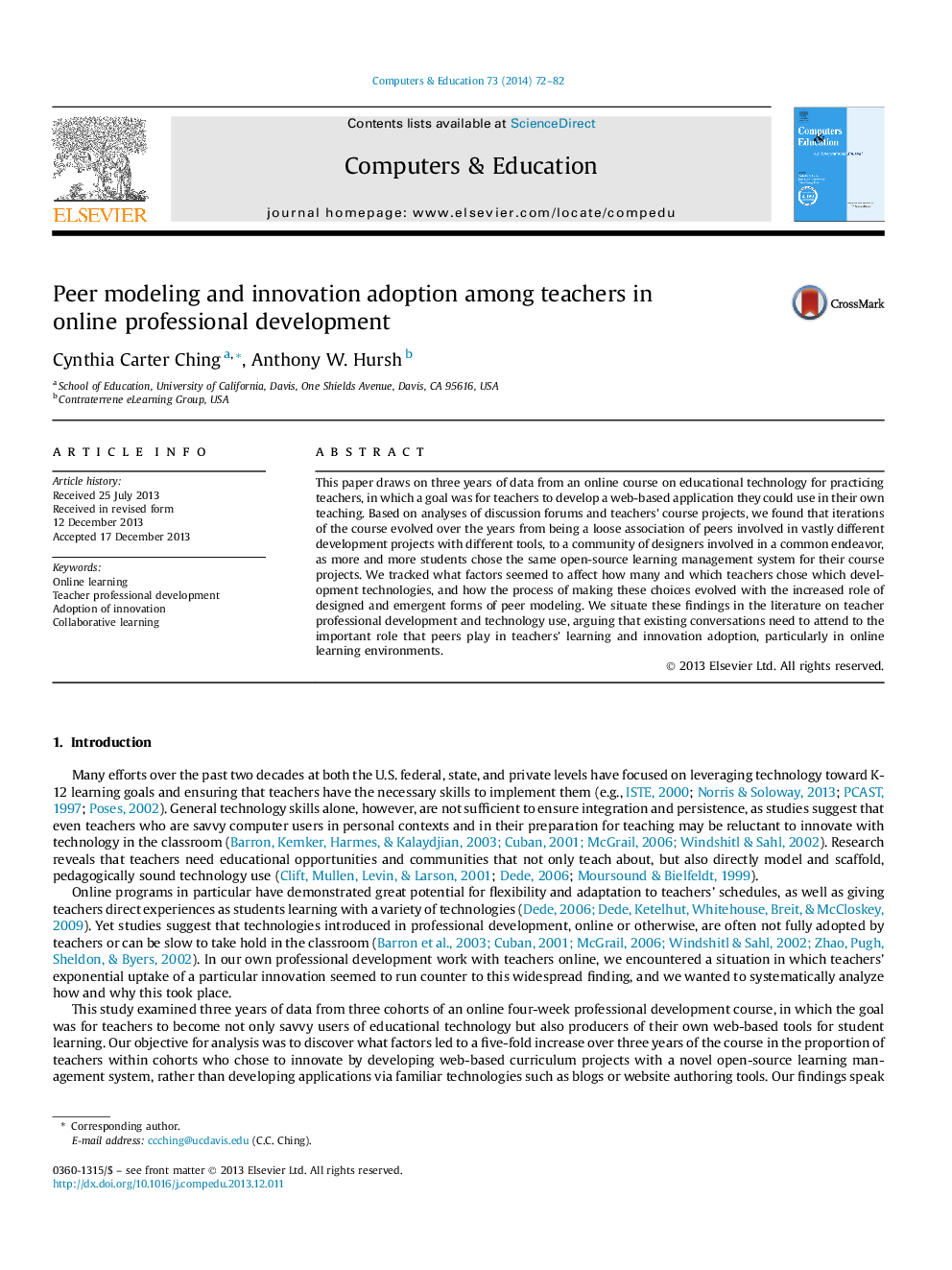| Article ID | Journal | Published Year | Pages | File Type |
|---|---|---|---|---|
| 348371 | Computers & Education | 2014 | 11 Pages |
•We examine an online professional development course for teachers.•We identify factors that led to innovation adoption by participants.•We articulate kinds of peer modeling that supported innovation.•We articulate other low-threshold factors that supported innovation.•We situate these findings in research on teachers and technology.
This paper draws on three years of data from an online course on educational technology for practicing teachers, in which a goal was for teachers to develop a web-based application they could use in their own teaching. Based on analyses of discussion forums and teachers' course projects, we found that iterations of the course evolved over the years from being a loose association of peers involved in vastly different development projects with different tools, to a community of designers involved in a common endeavor, as more and more students chose the same open-source learning management system for their course projects. We tracked what factors seemed to affect how many and which teachers chose which development technologies, and how the process of making these choices evolved with the increased role of designed and emergent forms of peer modeling. We situate these findings in the literature on teacher professional development and technology use, arguing that existing conversations need to attend to the important role that peers play in teachers' learning and innovation adoption, particularly in online learning environments.
